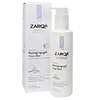What's inside
What's inside
 Key Ingredients
Key Ingredients

No key ingredients
 Benefits
Benefits

 Concerns
Concerns

No concerns
 Ingredients Side-by-side
Ingredients Side-by-side

Water
Skin ConditioningGlycerin
HumectantOctyldodecanol
EmollientCoco-Caprylate/Caprate
EmollientCetearyl Ethylhexanoate
EmollientCetyl Palmitate
EmollientDisodium Cocoyl Glutamate
CleansingC14-22 Alcohols
Emulsion StabilisingGlyceryl Stearate
EmollientCetyl Alcohol
EmollientMicrocrystalline Cellulose
AbsorbentCaprylyl Glycol
EmollientC12-20 Alkyl Glucoside
EmulsifyingXanthan Gum
EmulsifyingSodium Anisate
AntimicrobialEthylhexylglycerin
Skin ConditioningCellulose Gum
Emulsion StabilisingCitric Acid
BufferingMaris Sal
Skin ConditioningInulin Lauryl Carbamate
Emulsion StabilisingSodium Carboxymethyl Beta-Glucan
Cleansing1,2-Hexanediol
Skin ConditioningSodium Hydroxide
BufferingBiosaccharide Gum-4
Skin ConditioningWater, Glycerin, Octyldodecanol, Coco-Caprylate/Caprate, Cetearyl Ethylhexanoate, Cetyl Palmitate, Disodium Cocoyl Glutamate, C14-22 Alcohols, Glyceryl Stearate, Cetyl Alcohol, Microcrystalline Cellulose, Caprylyl Glycol, C12-20 Alkyl Glucoside, Xanthan Gum, Sodium Anisate, Ethylhexylglycerin, Cellulose Gum, Citric Acid, Maris Sal, Inulin Lauryl Carbamate, Sodium Carboxymethyl Beta-Glucan, 1,2-Hexanediol, Sodium Hydroxide, Biosaccharide Gum-4
 Reviews
Reviews

Ingredients Explained
These ingredients are found in both products.
Ingredients higher up in an ingredient list are typically present in a larger amount.
Cellulose Gum is a water-soluble polymer that comes from cellulose. It is used to change the texture of a product and to help stabilize emulsions.
As an emulsifier, cellulose gum specifically thicken the texture of water-based products.
This ingredient is considered hypoallergenic and non-toxic. Cellulose Gum can be found in cosmetics, food, and other household goods such as paper products.
Learn more about Cellulose GumCitric Acid is an alpha hydroxy acid (AHA) naturally found in citrus fruits like oranges, lemons, and limes.
Like other AHAs, citric acid can exfoliate skin by breaking down the bonds that hold dead skin cells together. This helps reveal smoother and brighter skin underneath.
However, this exfoliating effect only happens at high concentrations (20%) which can be hard to find in cosmetic products.
Due to this, citric acid is usually included in small amounts as a pH adjuster. This helps keep products slightly more acidic and compatible with skin's natural pH.
In skincare formulas, citric acid can:
While it can provide some skin benefits, research shows lactic acid and glycolic acid are generally more effective and less irritating exfoliants.
Most citric acid used in skincare today is made by fermenting sugars (usually from molasses). This synthetic version is identical to the natural citrus form but easier to stabilize and use in formulations.
Read more about some other popular AHA's here:
Learn more about Citric AcidWe don't have a description for Disodium Cocoyl Glutamate yet.
We don't have a description for Maris Sal yet.
Sodium Anisate comes from fennel. It is used as a preservative and to add flavoring.
Sodium Anisate has antimicrobial properties.
Sodium Hydroxide is also known as lye or caustic soda. It is used to adjust the pH of products; many ingredients require a specific pH to be effective.
In small amounts, sodium hydroxide is considered safe to use. However, large amounts may cause chemical burns due to its high alkaline.
Your skin has a natural pH and acid mantle. This acid mantle helps prevent harmful bacteria from breaking through. The acid mantle also helps keep your skin hydrated.
"Alkaline" refers to a high pH level. A low pH level would be considered acidic.
Learn more about Sodium HydroxideWater. It's the most common cosmetic ingredient of all. You'll usually see it at the top of ingredient lists, meaning that it makes up the largest part of the product.
So why is it so popular? Water most often acts as a solvent - this means that it helps dissolve other ingredients into the formulation.
You'll also recognize water as that liquid we all need to stay alive. If you see this, drink a glass of water. Stay hydrated!
Learn more about WaterXanthan gum is used as a stabilizer and thickener within cosmetic products. It helps give products a sticky, thick feeling - preventing them from being too runny.
On the technical side of things, xanthan gum is a polysaccharide - a combination consisting of multiple sugar molecules bonded together.
Xanthan gum is a pretty common and great ingredient. It is a natural, non-toxic, non-irritating ingredient that is also commonly used in food products.
Learn more about Xanthan Gum